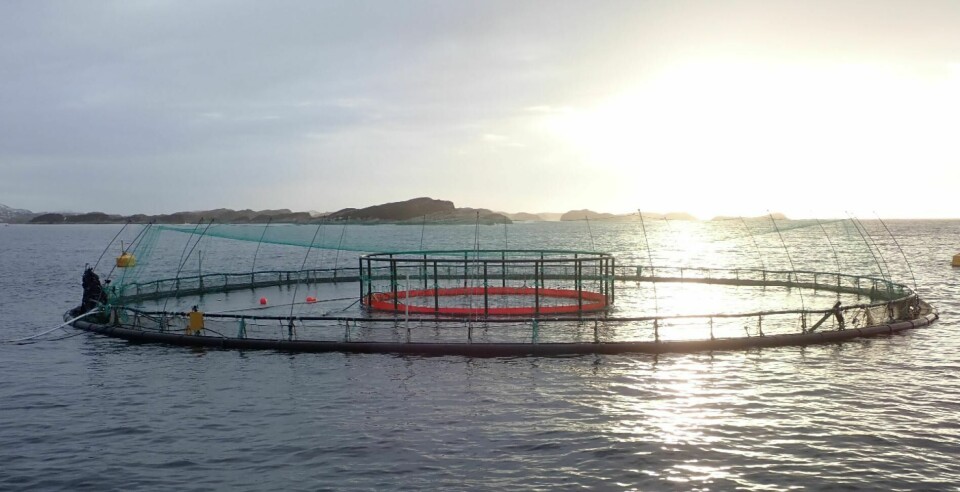
Can the formation of a freshwater well inside a cage reduce the lice level?
It is too early to say whether the use of freshwater, in combination with lice skirts and night lighting at depth, can reduce the lice level in the field. But maybe the effect is greater against amoebic gill disease (AGD)?
The Norwegian Seafood Research Fund (FHF) reports on its website that the Institute of Marine Research (IMR), in collaboration with Mowi, has just completed a field test where the objective was to reduce lice and the number of delousings using a freshwater well in combination with other well-known methods.
The use of medication for salmon lice has declined sharply in recent years, in favour of non-drug treatments. All treatment of the fish causes stress and increased risk, so getting good preventive strategies is therefore crucial for good fish welfare and performance.
Combination of measures
The use of lice skirts is a well-known method that is widespread in the Norwegian aquaculture industry today. The idea of this project was to combine common lice skirts with a freshwater well, night light at depth, use of cleaner fish and strategic feeding to reduce lice content compared to only skirt use.
This project is funded by FHF. Reducing lice problems is the priority for the industry and FHF has an overall research effort on salmon lice which is extensive. In 2017, FHF established a strategic lice initiative, involving approximately 20 projects that look at everything from basic biology to lice, via prevention to treatment. This project "The Well - FHF 901469" is one of the projects in the initiative.
The freshwater well in this project involved making an inner tarpaulin skirt inside the cage (about 6 metres deep) where, by means of a reverse osmosis desalination unit on a feed barge, freshwater was pumped in to form a brackish water layer. In order for the salmon to spend as much time as possible in the brackish water layer, the temperature was also adjusted to be in the ideal range for the salmon. In addition, targeted lighting and feeding were used to increase the salmon’s residence time both in water with a low salinity and at a greater depth in the cage. The number of lice and delousings was then compared to cages that used skirts without a freshwater well and light (see figure).
No impact on lice
No fewer lice were found using freshwater wells in combination with night light at depth and the same number of delousings was required. In contrast, in one of the cages, a lower incidence of AGD was found in an AGD outbreak, which meant that this cage had less treatment than the control group against AGD.
To reduce lice, the researchers discuss whether the salt level in the brackish water layer must be further reduced. In lab studies it has been shown that salinity must be below 12 parts per thousand to reduce lice infestation and below 4 ppt for three hours to obtain lice mortality. These levels were not achieved in this experiment. In addition, the salmon did not stay long enough in the brackish water layer to achieve the desired effect. Use of underwater lights also did not provide sufficient stimulation of the fish to keep it in the brackish water layer.
For more details read the final report here.




















































